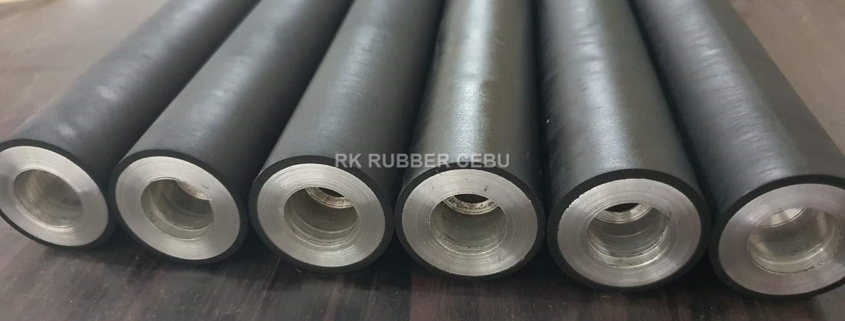Synthetic Rubber As a Good Low-cost and Alternative
Synthetic rubber is a cost-effective alternative to natural rubber, known for its durability and resilience. It can withstand various temperatures, chemicals, and conditions, leading to longer product lifespans and reduced maintenance costs. Its high flexibility allows for molding into different shapes, making it versatile across industries like automotive, aerospace, construction, and healthcare. Additionally, synthetic rubber offers environmental benefits by reducing emissions, minimizing waste, and supporting sustainability efforts. By investing in research and advanced technologies, the rubber industry can achieve long-term cost-effectiveness and sustainability goals. Learn more about the advantages and applications of synthetic rubber across industries.
Key Points
- Synthetic rubber is a cost-effective alternative to natural rubber.
- Offers increased durability and resilience in products.
- Can withstand wide temperature ranges and harsh chemicals.
- Environmentally friendly production methods reduce waste and emissions.
- Supports long-term sustainability goals in the rubber industry.
The Advantages of Synthetic Rubber
Synthetic rubber offers a cost-effective and versatile alternative to natural rubber, providing manufacturers with increased durability and resilience in their products. The durability of synthetic rubber is a key advantage, as it can withstand a wide range of temperatures, chemicals, and environmental conditions without deteriorating. This durability translates to longer product lifespans and reduced maintenance costs for manufacturers. Additionally, synthetic rubber offers a high level of flexibility, allowing it to be molded into various shapes and sizes to meet specific product requirements. This flexibility enhances the design possibilities for manufacturers, enabling them to create products with complex geometries and improved performance characteristics. Overall, the combination of durability and flexibility makes synthetic rubber an attractive choice for a wide range of applications across industries where reliability and cost-effectiveness are paramount.
Applications Across Various Industries
The versatility and durability of synthetic rubber make it a sought-after material in a wide range of industries, where its unique properties cater to diverse applications and enhance product performance. In industrial uses, synthetic rubber plays an essential role in sectors such as automotive, aerospace, construction, and healthcare. In the automotive industry, it is utilized in tires, hoses, seals, and gaskets due to its excellent resistance to wear, tear, and temperature fluctuations, enhancing overall vehicle performance and safety. Aerospace applications benefit from synthetic rubber’s ability to withstand extreme conditions, contributing to the reliability and longevity of aircraft components. In construction, synthetic rubber is employed in roofing materials, adhesives, and seals to provide waterproofing and weather resistance, ensuring structural integrity. Additionally, the healthcare sector relies on synthetic rubber for medical equipment, gloves, and tubing, where its biocompatibility and flexibility are paramount for patient care. Across these industries, the performance benefits of synthetic rubber are evident, making it an indispensable material for various applications.
Environmental Benefits of Synthetic Rubber
With a focus on sustainability and environmental impact, synthetic rubber presents a compelling case for its eco-friendly attributes in comparison to traditional rubber sources. One of the key environmental benefits of synthetic rubber is the reduction in emissions during its production process. Compared to natural rubber, the production of synthetic rubber emits fewer greenhouse gases, contributing to lower carbon footprints in manufacturing.
Additionally, synthetic rubber offers eco-friendly production methods that further enhance its environmental advantages. The manufacturing processes for synthetic rubber can be tailored to minimize waste generation and energy consumption, aligning with sustainable practices. This eco-friendly production approach not only reduces the environmental impact but also supports the overall conservation of resources.
Cost-effectiveness and Sustainability
Incorporating cost-effective practices into the production of synthetic rubber is essential for achieving long-term sustainability goals in the rubber industry. Cost savings play a pivotal role in ensuring the viability and competitiveness of synthetic rubber as an alternative to natural rubber. By optimizing production efficiency through streamlined processes and advanced technologies, manufacturers can reduce operational costs considerably. Implementing energy-efficient systems, such as automated production lines and recycling initiatives, not only enhances cost-effectiveness but also contributes to the overall sustainability of synthetic rubber production.
Moreover, investing in research and development aimed at discovering innovative materials and production methods can further drive down costs while promoting environmental stewardship. Leveraging economies of scale and strategic partnerships within the supply chain can also yield substantial cost benefits. By prioritizing cost-effectiveness and sustainability in the production of synthetic rubber, the industry can pave the way for a more efficient and environmentally conscious future.
Frequently Asked Questions
Is Synthetic Rubber Biodegradable or Recyclable?
Synthetic rubber varies in biodegradability and recyclability. Some types are neither biodegradable nor easily recyclable, posing environmental challenges. Innovations are being pursued to enhance sustainability, aiming for improved environmental impact in the rubber industry.
What Are the Potential Health Risks of Using Synthetic Rubber?
Potential health risks of using synthetic rubber include allergic reactions, skin irritation, and respiratory issues due to chemicals and additives. Some compounds in synthetic rubber can be toxic, causing harm upon prolonged exposure.
Can Synthetic Rubber Be Used in Extreme Temperatures?
Synthetic rubber can withstand high temperatures and exhibit excellent cold resistance properties. Its ability to function in extreme conditions makes it a suitable material for various applications, ensuring durability and performance.
How Does the Production of Synthetic Rubber Impact Wildlife?
The production of synthetic rubber can impact wildlife through habitat destruction, wildlife displacement, pollution, and ecosystem disruption. These activities can lead to significant environmental consequences, affecting biodiversity and ecosystem balance in various regions.
Are There Any Limitations to the Durability of Synthetic Rubber?
Durability concerns in synthetic rubber can relate to its susceptibility to degradation over time, impacting its long-term performance. Environmental impact from disposal of worn-out products is also a key consideration in evaluating its overall sustainability.
Conclusion
To sum up, synthetic rubber offers numerous advantages when it comes to cost-effectiveness, versatility across industries, and environmental sustainability. Its ability to be produced in large quantities at a lower cost compared to natural rubber makes it a viable alternative for various applications. Additionally, the environmental benefits of synthetic rubber, such as reduced carbon emissions and energy consumption, further contribute to its appeal as a sustainable option for the future.

